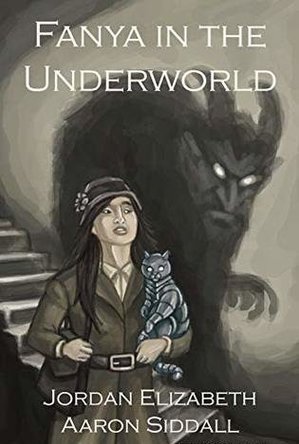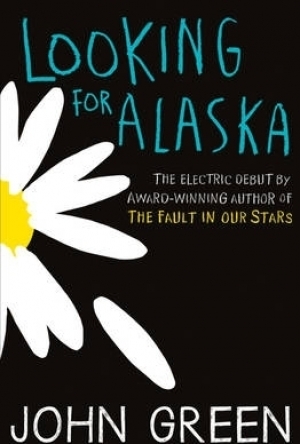Search
Search results
Heather Cranmer (2721 KP) created a post
Oct 24, 2020
Hazel (1853 KP) rated Fanya in the Underworld in Books
Dec 6, 2018
I was sent a copy of this book by the author in exchange for an honest review.
Author Jordan Elizabeth has written many stories for young adults of all sorts of genres. With Fanya in the Underworld, Jordan tackles steampunk fiction with elements of fantasy and the paranormal. Set in Alaska during the 19th century when the state was still owned by Tsarist Russia, humans rely on steamtech and spirit magic to fuel their industrious cities.
The story begins shortly after the death of Fanya's father, leaving her as heir to his estate. Unfortunately, her step-mother has overruled her right to her inheritance. By making a fuss to the council, Fanya inadvertently puts both her life and the life of her younger sister in danger. Desperate to protect her sister from the clutches of a mysterious Englishman, Fanya finds herself in the wilderness where the indigenous, magical folk live. Despite having lived in a city her entire life, Fanya soon discovers she has far more in common with the people in the untamed wild.
Whilst a work of imaginative fiction, Fanya in the Underworld works with the historical truth about settlers moving to Alaska, Canada and the United States. Those from Europe who travelled to North America drove out the indigenous folk, destroyed their land and culture and deemed them to be lesser beings. The same has occurred in this novel in which the natives are banned from the cities, treated like animals and even murdered just for being who they are.
By caring so much about her sister, Fanya discovers the truth about the way the cities developed and is shocked by the revelation. Although her sister is at the forefront of her mind, her actions cause huge changes in Alaska resulting in a favourable, although unpredictable, conclusion.
Jordan Elizabeth draws the reader into the steampunk world of Tsarist Alaska. With the aid of illustrations by Aaron Siddal, Fanya in the Underworld is an exciting story unlike any written before. Unique characters, unique scenarios, and a fantastic ending, what more could anyone want?
Author Jordan Elizabeth has written many stories for young adults of all sorts of genres. With Fanya in the Underworld, Jordan tackles steampunk fiction with elements of fantasy and the paranormal. Set in Alaska during the 19th century when the state was still owned by Tsarist Russia, humans rely on steamtech and spirit magic to fuel their industrious cities.
The story begins shortly after the death of Fanya's father, leaving her as heir to his estate. Unfortunately, her step-mother has overruled her right to her inheritance. By making a fuss to the council, Fanya inadvertently puts both her life and the life of her younger sister in danger. Desperate to protect her sister from the clutches of a mysterious Englishman, Fanya finds herself in the wilderness where the indigenous, magical folk live. Despite having lived in a city her entire life, Fanya soon discovers she has far more in common with the people in the untamed wild.
Whilst a work of imaginative fiction, Fanya in the Underworld works with the historical truth about settlers moving to Alaska, Canada and the United States. Those from Europe who travelled to North America drove out the indigenous folk, destroyed their land and culture and deemed them to be lesser beings. The same has occurred in this novel in which the natives are banned from the cities, treated like animals and even murdered just for being who they are.
By caring so much about her sister, Fanya discovers the truth about the way the cities developed and is shocked by the revelation. Although her sister is at the forefront of her mind, her actions cause huge changes in Alaska resulting in a favourable, although unpredictable, conclusion.
Jordan Elizabeth draws the reader into the steampunk world of Tsarist Alaska. With the aid of illustrations by Aaron Siddal, Fanya in the Underworld is an exciting story unlike any written before. Unique characters, unique scenarios, and a fantastic ending, what more could anyone want?
Goddess in the Stacks (553 KP) rated Looking for Alaska in Books
Jan 25, 2018
I just finished reading Looking for Alaska, making it the fifth John Green book I've read, after Will Grayson, Will Grayson, Let It Snow, The Fault In Our Stars, and An Abundance of Katherines. I enjoyed Looking for Alaska immensely, just like I did the other three. (My favorite being Let It Snow, which he wrote with two other authors as a set of three related short stories.) I haven't made a habit out of reading young adult fiction, but for John Green I'll definitely make an exception. I should also pick up some of Maureen Johnson's books; her contribution to Let It Snow was excellent.
I have a confession to make before I go any further: I am a Nerdfighter. I was introduced to John and Hank Green about two years ago by one of my best friends, by way of Crash Course. Since then I've (almost!) caught up on their Vlogbrother videos, watched most of the Crash Course videos (sorry Hank, I'm just not into chemistry) and started watching Sci Show. John and Hank are both extremely educated, well spoken, and yet extremely entertaining and fun to watch. Watching the vlogbrothers episodes where John talks about writing the books (as he's writing them!) is what finally made me go pick up his books to read. And he's GOOD.
In Looking for Alaska, Miles Halter goes away to boarding school at Culver Creek, his father's alma mater. He's in search of his "great perhaps," his meaning for life. (The phrase comes from Francois Rabelais' last words "I go to seek a Great Perhaps." Miles doesn't want to wait until he dies to go in search of his.) Culver Creek really marks a turning point in Miles' life - from a friendless outcast in his old school to one of the closest friends of Alaska Young. Alaska is a bit of a bad girl (sneaking cigarettes and alcohol into school constantly and pulling ingenious pranks) but also an enigma. The entire school body loves her, but even to her closest friends she doesn't reveal much about herself.
The book is divided into "before" and "after" and it wasn't until within a few pages till the end of the "before" section that I realized what the event was. "After" deals with the characters of the book coming to terms with their life-altering event.
In The Fault In Our Stars, John Green dealt with the lead up to a life-altering event that the characters knew was coming - a long, drawn-out sort of grief. Looking For Alaska deals with the fallout of an event no one knew was coming, and while the emotions are just as deep, they feel sharper somehow for being so unexpected.
I definitely recommend this book, and all of John Green's books. He's a very talented writer, and isn't afraid to put "adult" themes into his "young adult" books. As if sex and alcohol and death and deep meaning-of-life questions aren't things every teenager deals with? I like that he doesn't pull his emotional punches. His books may be "young adult" but they're not fluffy or "easy to read." Easy in terms of grammar and flow perhaps, but not in content. I teared up reading parts of Looking For Alaska, and outright sobbed for a good portion of The Fault In Our Stars. (Which is now a movie!)
You can find all my reviews at http://goddessinthestacks.wordpress.com (review originally written 4 years ago.)
I have a confession to make before I go any further: I am a Nerdfighter. I was introduced to John and Hank Green about two years ago by one of my best friends, by way of Crash Course. Since then I've (almost!) caught up on their Vlogbrother videos, watched most of the Crash Course videos (sorry Hank, I'm just not into chemistry) and started watching Sci Show. John and Hank are both extremely educated, well spoken, and yet extremely entertaining and fun to watch. Watching the vlogbrothers episodes where John talks about writing the books (as he's writing them!) is what finally made me go pick up his books to read. And he's GOOD.
In Looking for Alaska, Miles Halter goes away to boarding school at Culver Creek, his father's alma mater. He's in search of his "great perhaps," his meaning for life. (The phrase comes from Francois Rabelais' last words "I go to seek a Great Perhaps." Miles doesn't want to wait until he dies to go in search of his.) Culver Creek really marks a turning point in Miles' life - from a friendless outcast in his old school to one of the closest friends of Alaska Young. Alaska is a bit of a bad girl (sneaking cigarettes and alcohol into school constantly and pulling ingenious pranks) but also an enigma. The entire school body loves her, but even to her closest friends she doesn't reveal much about herself.
The book is divided into "before" and "after" and it wasn't until within a few pages till the end of the "before" section that I realized what the event was. "After" deals with the characters of the book coming to terms with their life-altering event.
In The Fault In Our Stars, John Green dealt with the lead up to a life-altering event that the characters knew was coming - a long, drawn-out sort of grief. Looking For Alaska deals with the fallout of an event no one knew was coming, and while the emotions are just as deep, they feel sharper somehow for being so unexpected.
I definitely recommend this book, and all of John Green's books. He's a very talented writer, and isn't afraid to put "adult" themes into his "young adult" books. As if sex and alcohol and death and deep meaning-of-life questions aren't things every teenager deals with? I like that he doesn't pull his emotional punches. His books may be "young adult" but they're not fluffy or "easy to read." Easy in terms of grammar and flow perhaps, but not in content. I teared up reading parts of Looking For Alaska, and outright sobbed for a good portion of The Fault In Our Stars. (Which is now a movie!)
You can find all my reviews at http://goddessinthestacks.wordpress.com (review originally written 4 years ago.)

